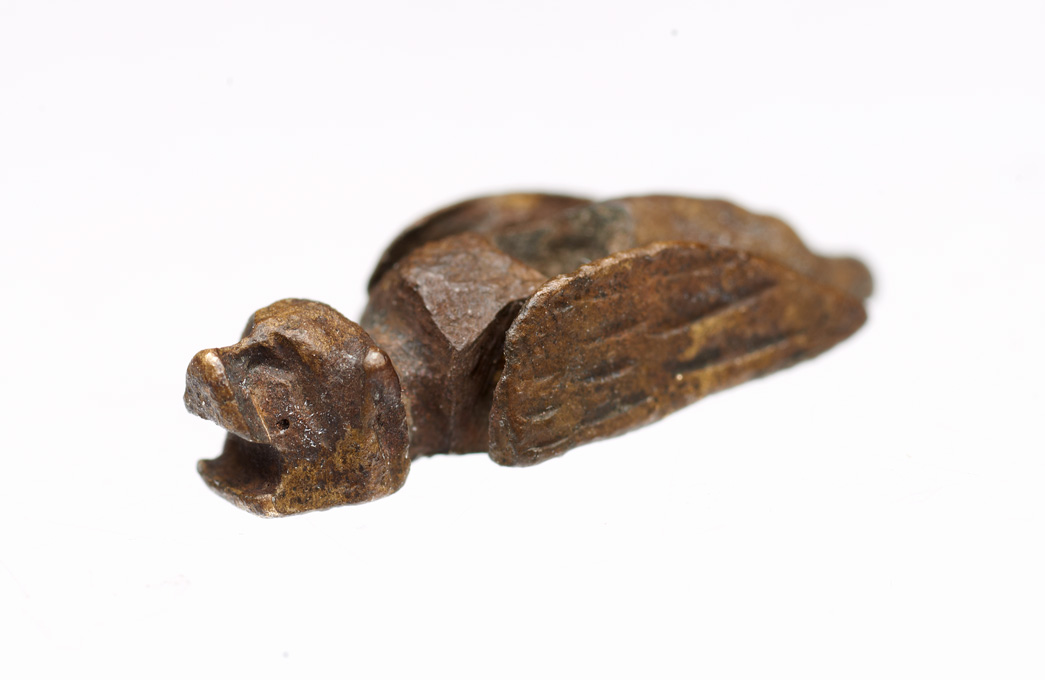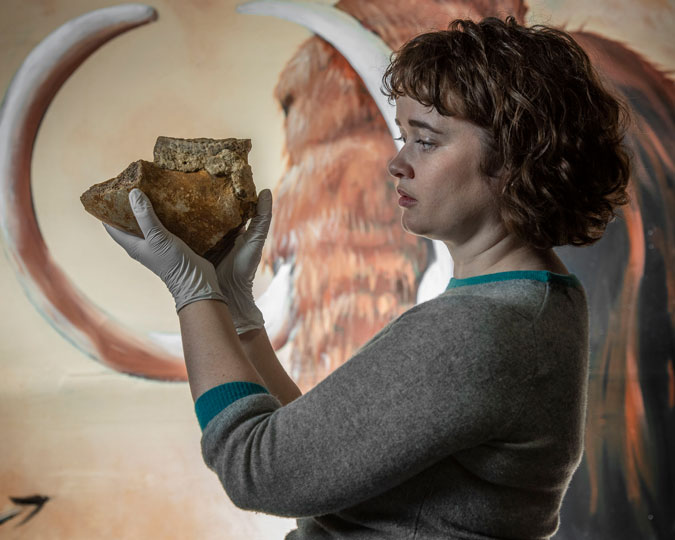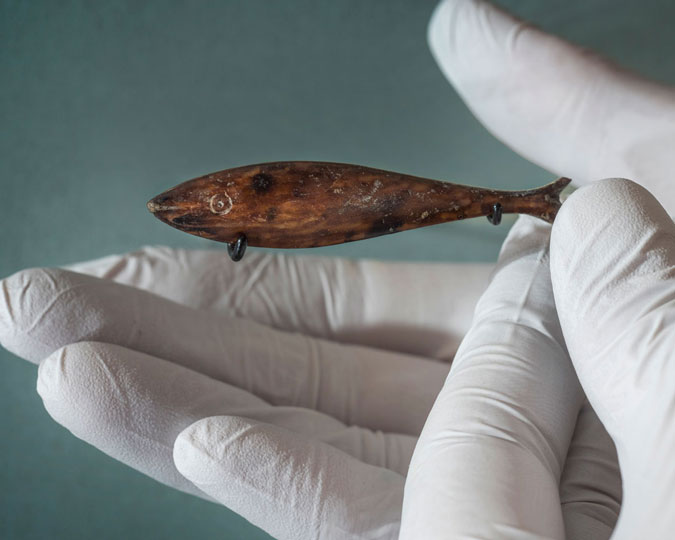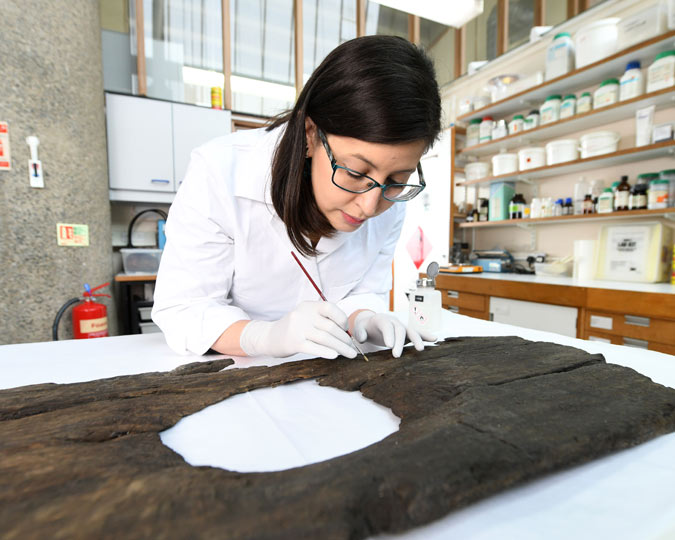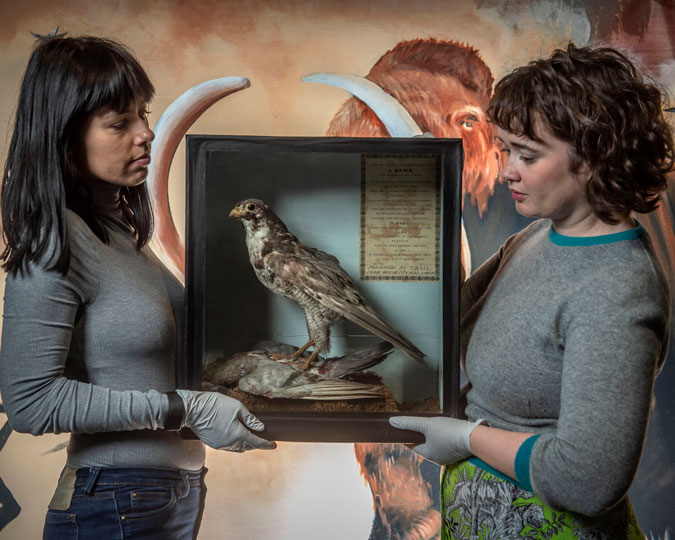Matthew Russell, student at Queen Mary, University of London, tells us about a tiny medieval dragon in the Museum of London's collection.
In October 2018, students from Queen Mary University of London visited Museum of London as part of their undergraduate course ‘Beer, Books and Longbows: The World of Medieval Objects’, taught by Dr Eyal Poleg, Senior Lecturer in Material History. Curator Meriel Jeater presented them with 25 medieval objects from the stores about which little research had been done. Students chose their favourite artefact, researched it and wrote a detailed essay, exploring what it revealed about medieval life. Selected essays were developed into blog articles of which this is the first, written by Matthew Russell.
Smaller than a five pence coin, the smallest dragon resides in storage at the Museum of London. An object of fascination, almost nothing is known about it, aside from that it was made and used in medieval London. It’s so small that the easiest way to hold it is with tweezers.
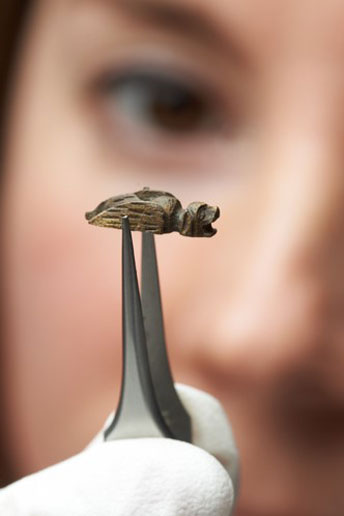
Intended to be used as a belt-mount, it would have been attached to a belt by a rivet, with the intention of being aesthetically pleasing. Medieval expert Dr Annemarieke Willemsen describes these mounts as the ‘bling bling’ of the Middle Ages. They were used as dress accessories and came in a variety of shapes and styles, from circles and rectangles to animals or flowers. Belt-mounts were worn by anyone from princes to peasants in the late Middle Ages. There is an example of a belt on display in the Museum of London’s medieval gallery with its decorative copper alloy mounts or studs still attached.
Our mount depicts a roaring wyvern, a legendary winged creature with open jaws, two legs and a curled tail. Wyverns were regarded as powerful and fearsome monsters and many are found in medieval coats of arms. They represented pestilence and destruction, appearing in illuminated manuscripts. There is a great 14th-century example in the British Library collection showing people worshipping the dragon.
Medieval dress was linked to social status. Mounts made of gold and silver were expensive and made for the elite, much like wearing a Rolex today. Others (like our dragon, and scores of others in the museum) were made of cheaper copper or lead alloys. Cheap and mass-produced in batches of many at a time, they were within the reach of large swathes of medieval society. Unlike today, medieval laws regulated what clothes people could wear. Sumptuary laws ordained that those ‘below the estate of knight’ were not to wear ‘cloth of gold, silk or silver, or any manner of embroidered clothing, ring, brooch, clasp of gold, ribbon, belt or any other apparel or attire of gold or silver, or any precious stones’.
Such laws were intended to curb excessive expenditure and to maintain a rigid framework of class-based dress. Ultimately ineffective, these laws could be avoided by paying fines. A second-hand clothes market was also subversive. Existing at the margins of society, fripperers (used clothing dealers) enabled London’s citizens to procure clothing and accessories, cast off from their social superiors.
Cheap doesn’t necessarily mean simple. Inexpensive mounts were made of base metals but in different shapes. Copper-alloy was commonly used in England; lead-based mounts were more popular on the Continent. Londoners were demanding cheaper goods, which resulted in a shift towards lead alloy mounts whilst the rest of the country still favoured copper alloy mounts. We can see a distinct ‘London look’ during the later 14th century, which replicated popular European styles. In medieval London ‘fashion’ was emerging as individuals desired an ever-changing appearance.
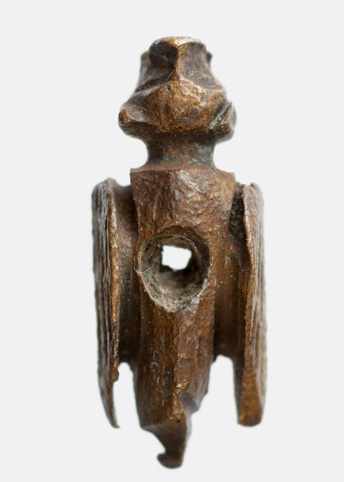
Interestingly, attempts were made to outlaw lead-alloy mounts. The Worshipful Company of Girdlers prohibited mounts made of ‘inferior metals’. The 1327 charter granted to the company outlined that ‘no man of the said trade should cause any girdle of silk, of wool, of leather, or of linen thread, to be garnished with any inferior metal than with latten, copper, iron, and steel’.
This ‘false work’ included ‘lead, pewter, and tin, and other false things’. Those who disregarded this were punished through extortionate fines and their ‘false work’ burnt. Fines ranged from 40 pence (10 day’s wages for a labourer) to, after several repeated offences, 20 shillings. Thus, though physically small, the smallest dragon in London has outsize historical importance. It is a historical stepping stone, allowing us to examine wider changes in ‘fashion’ and fashionable dress in medieval London.








